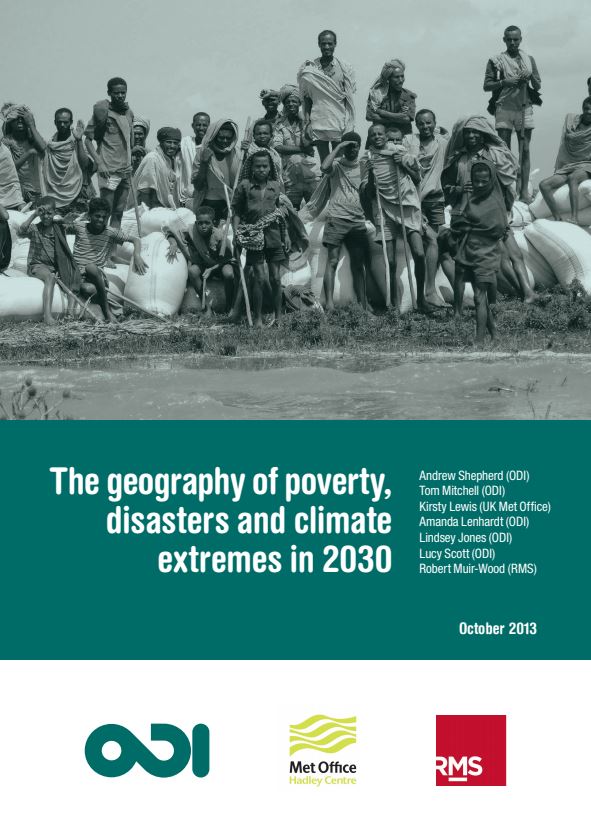This report examines the relationship between disasters and poverty.
The report's key messages are:
Extreme weather linked to climate change is increasing and will likely cause more disasters. Such disasters, especially those linked to drought, can be the most important cause of impoverishment, cancelling progress on poverty reduction.
Up to 325 million extremely poor people will be living in the 49 most hazard-prone countries in 2030, the majority in South Asia and sub-Saharan Africa.
The 11 countries most at risk of disaster-induced poverty are Bangladesh, Democratic Republic of the Congo, Ethiopia, Kenya, Madagascar, Nepal, Nigeria, Pakistan, South Sudan, Sudan and Uganda.
Disaster risk management should be a key component of poverty reduction efforts, focusing on protecting livelihoods as well as saving lives. There is a need to identify and then act where the poor and disaster risks are most concentrated.
The post-2015 development goals must include targets on disasters and climate change, recognising the threat they pose to the headline goal of eradicating extreme poverty by 2030.
Authors: Andrew Shepherd, Tom Mitchell, Kirsty Lewis, Amanda Lenhardt, Lindsey Jones, Lucy Scott, Robert Muir-Wood
Download the report below:
Full Report: The geography of poverty, disasters and climate extremes in 2030
Executive Summary: The geography of poverty, disasters and climate extremes in 2030
Resumen Ejecutivo: La geografía de la pobreza, los desastres y el clima extremo en 2030
Technical Annexes: The geography of poverty, disasters and climate extremes in 2030

